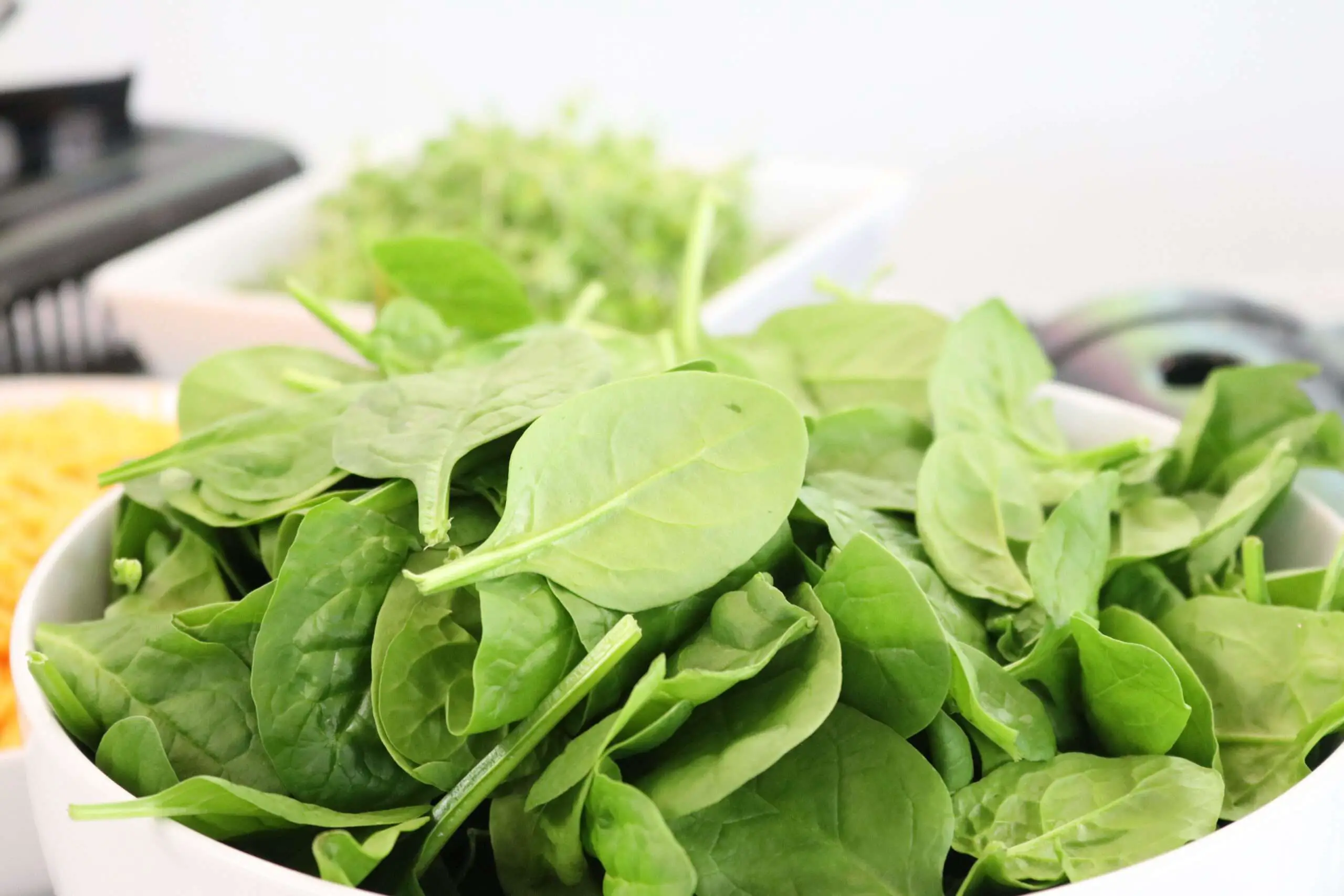Eating Spinach Can Boost Your Health and Energy Levels
Spinach, a nutrient-dense leafy green, has long been recognized for its numerous health benefits. In this comprehensive guide, we explore the top health benefits of eating spinach, supported by scientific evidence. Additionally, we’ll share delicious spinach recipes, address common questions about this leafy green, and provide helpful resources.
Introduction
Eating spinach is not only delicious but also packed with an array of health benefits. This guide will delve into the top benefits of incorporating spinach into your diet, provide tasty recipe ideas, and address frequently asked questions about this nutrient powerhouse.
Nutrient-Dense Superfood
Spinach is a nutrient-dense leafy green, containing a wealth of vitamins, minerals, and antioxidants. The following table showcases the nutritional content of 100 grams of raw spinach:
| Nutrient | Amount | %Daily Value |
|---|---|---|
| Calories | 23 | 1% |
| Protein | 2.9 gm | 6% |
| Fat | 0.4 gm | 1% |
| Carbohydrates | 3.6 gm | 1% |
| Fiber | 2.2 gm | 9% |
| Vitamin A | 9,376 IU | 188% |
| Vitamin C | 28.1 mg | 34% |
| Vitamin K | 482.9 µg | 403% |
| Calcium | 99 mg | 10% |
| Iron | 2.7 mg | 15% |
| Magnesium | 79 mg | 20% |
Supports Eye Health
Spinach is an excellent source of lutein and zeaxanthin, two carotenoids that help maintain eye health. These antioxidants protect against age-related macular degeneration and cataracts, promoting clearer vision as you age.
Enhances Immunity
Spinach’s high levels of vitamin C support a healthy immune system by stimulating the production of white blood cells. Additionally, the antioxidants found in spinach, such as beta-carotene and vitamin E, help combat oxidative stress and protect cells from damage.
Improves Bone Health
Vitamin K is essential for bone health, and spinach is a rich source. It aids in calcium absorption, preventing bone mineral loss and reducing the risk of fractures. Coupled with its calcium and magnesium content, spinach is an ideal food for promoting strong bones.
Weight Management
The high fiber content in spinach can help you feel full longer, reducing overall calorie intake and supporting weight management. Additionally, its low-calorie profile makes it an ideal addition to any weight loss plan.
Promotes Heart Health
Eating spinach regularly can support heart health due to its high potassium, magnesium, and vitamin K content. These nutrients help regulate blood pressure, prevent blood clot formation, and maintain proper heart function.
Aids in Digestion
The fiber in spinach supports a healthy digestive system by adding bulk to your stool, promoting regular bowel movements, and preventing constipation. Additionally, spinach contains chlorophyll, which has been shown to support gut health.
Boosts Energy Levels
Spinach is a natural source of iron, a vital component for producing energy within cells. Incorporating spinach into your diet can help prevent iron deficiency anemia, which causes fatigue and weakness.
Cancer-Fighting Properties
Spinach contains various compounds that have been associated with cancer prevention, including antioxidants and flavonoids. These compounds help neutralize harmful free radicals and reduce inflammation, potentially lowering the risk of certain types of cancer.
Spinach Recipe Ideas
To help you incorporate more spinach into your meals, here are some tasty and nutritious recipe ideas:
Spinach and Feta Stuffed Chicken
Ingredients:
- 4 boneless, skinless chicken breasts
- 1 cup fresh spinach, chopped
- 1/2 cup feta cheese, crumbled
- 1 tbsp olive oil
- Salt and pepper, to taste
Instructions:
- Preheat oven to 375°F (190°C).
- Cut a pocket in each chicken breast, being careful not to cut through the other side.
- In a bowl, mix together the chopped spinach and feta cheese.
- Stuff each chicken breast with the spinach and feta mixture.
- Season the chicken with salt and pepper, and drizzle with olive oil.
- Bake for 25-30 minutes, or until chicken is cooked through.
Spinach and Berry Smoothie
Ingredients:
- 2 cups fresh spinach
- 1 cup frozen mixed berries
- 1 ripe banana
- 1 cup unsweetened almond milk
- 1 tbsp chia seeds
Instructions:
- Add spinach, mixed berries, banana, almond milk, and chia seeds to a blender.
- Blend until smooth and creamy.
- Pour into a glass and enjoy!
Spinach and Quinoa Salad
Ingredients:
- 3 cups fresh spinach, chopped
- 1 cup cooked quinoa
- 1/2 cup cherry tomatoes, halved
- 1/4 cup red onion, thinly sliced
- 1/4 cup feta cheese, crumbled
- 1/4 cup chopped walnuts
- 1/4 cup balsamic vinaigrette
Instructions:
- In a large bowl, combine spinach, quinoa, cherry tomatoes, red onion, feta cheese, and walnuts.
- Drizzle with balsamic vinaigrette and toss to combine.
- Serve immediately or refrigerate for later.
FDA-Approved Wegovy™ Semaglutide
In Conclusion
Spinach is a versatile and nutrient-dense superfood that can easily be added to your daily diet. Its numerous health benefits, including improved eye health, enhanced immunity, and increased energy levels, make it an essential addition to any meal plan. By exploring various recipes and preparations, you can enjoy the benefits of eating spinach while keeping your meals delicious and satisfying.
We would love to hear from you! Did you find this article helpful? Have you tried any of the spinach recipes we shared? Do you have any suggestions for future articles or topics? Please leave a comment below and let us know your thoughts.
Additionally, if you found this article informative and valuable, we encourage you to share it with your friends and family on social media. Your support helps us continue to create high quality content that promotes health and wellness.
Thank you for taking the time to read this article, and we look forward to hearing from you soon!
Frequently Asked Questions
Q: How much spinach should I eat to reap the benefits?
A: Aim for at least one cup of cooked spinach or two cups of raw spinach per day to receive the maximum health benefits.
Q: Can I eat spinach every day?
A: Yes, eating spinach daily is safe and beneficial. However, it’s essential to maintain a balanced diet by incorporating a variety of fruits, vegetables, and whole grains.
Q: Can I eat spinach raw or cooked?
A: Both raw and cooked spinach offer health benefits, but cooking can enhance the absorption of certain nutrients, such as iron and calcium.
Q: Are there any side effects of eating too much spinach?
A: Consuming large amounts of spinach could cause digestive discomfort or contribute to kidney stones in susceptible individuals due to its oxalate content. Moderation and a balanced diet are key.
Q: Can I freeze spinach to preserve its nutrients?
A: Yes, freezing spinach is an excellent way to maintain its nutritional value. Blanch spinach leaves before freezing to maintain their texture and flavor.
Helpful Resources
- USDA National Nutrient Database: Provides a comprehensive database of the nutrient content of foods, including spinach.
- Harvard T.H. Chan School of Public Health – Nutrition Source: Offers a wealth of evidence-based information on nutrition, including the benefits of various foods like spinach.
- American Institute for Cancer Research: Provides research-based information on cancer prevention, including the role of diet and specific foods like spinach in reducing cancer risk.
- Academy of Nutrition and Dietetics – Eat Right: Offers practical information on nutrition, including tips on incorporating spinach into your diet.
- MyPlate: Provides resources and guidance for building a balanced and nutritious diet, including the importance of leafy greens like spinach.













